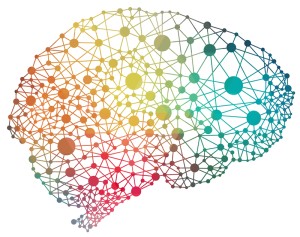Tuesday, February 19, 2019 from 12-1 pm Pacific, 3-4 pm Eastern

Webinar Archive
- Webinar recording with audio, slides, and Q&A (Adobe Connect)
- Slides (PDF) by Adam Green, Ibrahim Dahlstrom-Hakki, and Terry Jernigan
How could neuroscience impact learning and teaching in the classroom? How can learning and teaching practices inform neurological models? What exciting opportunities and questions lie ahead at the convergence of neuroscience and educational research? What ethical and logistical considerations must we keep in mind while designing a research agenda in this area?
Educational neuroscience is the convergence of emergent neuroscience with decades of learning science and educational research. Novel methods in neuroscience are enabled by advances in technology and understanding of the brain, allowing researchers to explore how these new methods can be used to understand the connection between classroom practice, neuroscience, and educational neuroscience.
In this webinar, Jodi Asbell-Clarke and Judi Fusco will facilitate a discussion about the convergence of emergent neuroscience with decades of learning science with a panel of researchers. We start the conversation with the premise that the different perspectives all have something to contribute and something to learn as laboratory-based neuroscience goes “into the wild” of the classroom. Panelists include Adam Green, Ibrahim Dahlstrom-Hakki, and Terry Jernigan as panelists. All of the panelists were presenters at the 2018 IMBES (the International Mind, Brain, and Education Society) conference.
Panelists
Adam Green, Director of the Georgetown Laboratory for Relational Cognition, leads two neurocognitive studies of the effects of spatial thinking skills on high school students studying geoscience: Cognitive and Neural Indicators of School-based Improvements in Spatial Problem Solving (NSF 1420481) and Neural and Cognitive Strengthening of Conceptual Knowledge and Reasoning in Classroom-based Spatial Education (NSF 1661065). This collaborative research is studying the link between spatial ability and future STEM attainment and how spatial training may reduce gender differences. Understanding the mechanism for why spatial skills help in future STEM attainment could lead to new interventions to help close the gap between those who achieve later success and those who don’t. His work compares students in a high school geospatial course designed to improve spatial thinking with peers in non-spatially-based advanced STEM courses. It compares neural, behavioral, and educational data to determine if there are changes in patterns of brain activity to gain a fuller understanding of spatial STEM learning as a result of the course. This work bridges classroom experiences with neuroscience by collecting pre- and post-course MRIs (both functional and structural), and serves as a model for doing work that applies methods developed in the neuroscience lab to measure real-world STEM learning.
Ibrahim Dahlstrom-Hakki, Senior Research Scientist at EdGE at TERC, leads two NSF funded projects studying the STEM learning of neurodiverse populations: Social Presence Online (NSF 1420198) and Revealing the Invisible (NSF 1417456). Multimodal methods of assessing implicit learning show great promise for revealing knowledge and abilities from a broad and diverse set of learners. The measurement of implicit knowledge – knowledge that a learner does not express in words – may be key to accurate learning assessments of cognitively diverse learners such as those with ADHD, dyslexia, and autism. By combining various data sources related to implicit learning, such as visual attention and cortical activity, along with patterns of behaviors evident in STEM-related gameplay, researchers are building multimodal models of implicit learning to inform formative learning assessments in STEM. As part of an NSF funded collaboration among TERC, Landmark College, and MIT, researchers have built a multimodal data architecture called DataArcade to analyze simultaneous streams of data from different devices. The playback tool within DataArcade can overlay eye-tracking and neurological data on top of the game data visualization so that researchers can see what the player is attending to and visualize facets of their executive function and emotional states while they are playing. Eventually this information will be used to build formative assessments that inform teachers when students are primed for a specific intervention, and also used by the game itself to provide an adaptive experience differentiated for individual learners.
Terry Jernigan is Professor of Cognitive Science, Psychiatry, and Radiology, and Director of the Center for Human Development at the University of California, San Diego. For more than 30 years, she has studied the human brain using noninvasive imaging. She is currently Co-Director of the Adolescent Brain Cognitive Development (ABCD) Study, which is the largest long-term study of brain development and child health in the United States. The National Institutes of Health (NIH) funded leading researchers in the fields of adolescent development and neuroscience to conduct this ambitious project. The ABCD Research Consortium consists of a Coordinating Center, a Data Analysis and Informatics Center, and 21 research sites across the country, which will invite more than 10,000 children ages 9-10 to join the study. Researchers will track their biological and behavioral development through adolescence into young adulthood.
Suggested Citation
Asbell-Clark, J., Green, A., Jernigan, T., Dalstrom-Hakki, I., & Fusco, J. (2019, February 19). Neuroscience and Cyberlearning: A Convergence Conversation [Webinar]. In CIRCL Webinar Series. Retrieved from https://circlcenter.org/events/webinar-neuroscience-and-cyberlearning/
